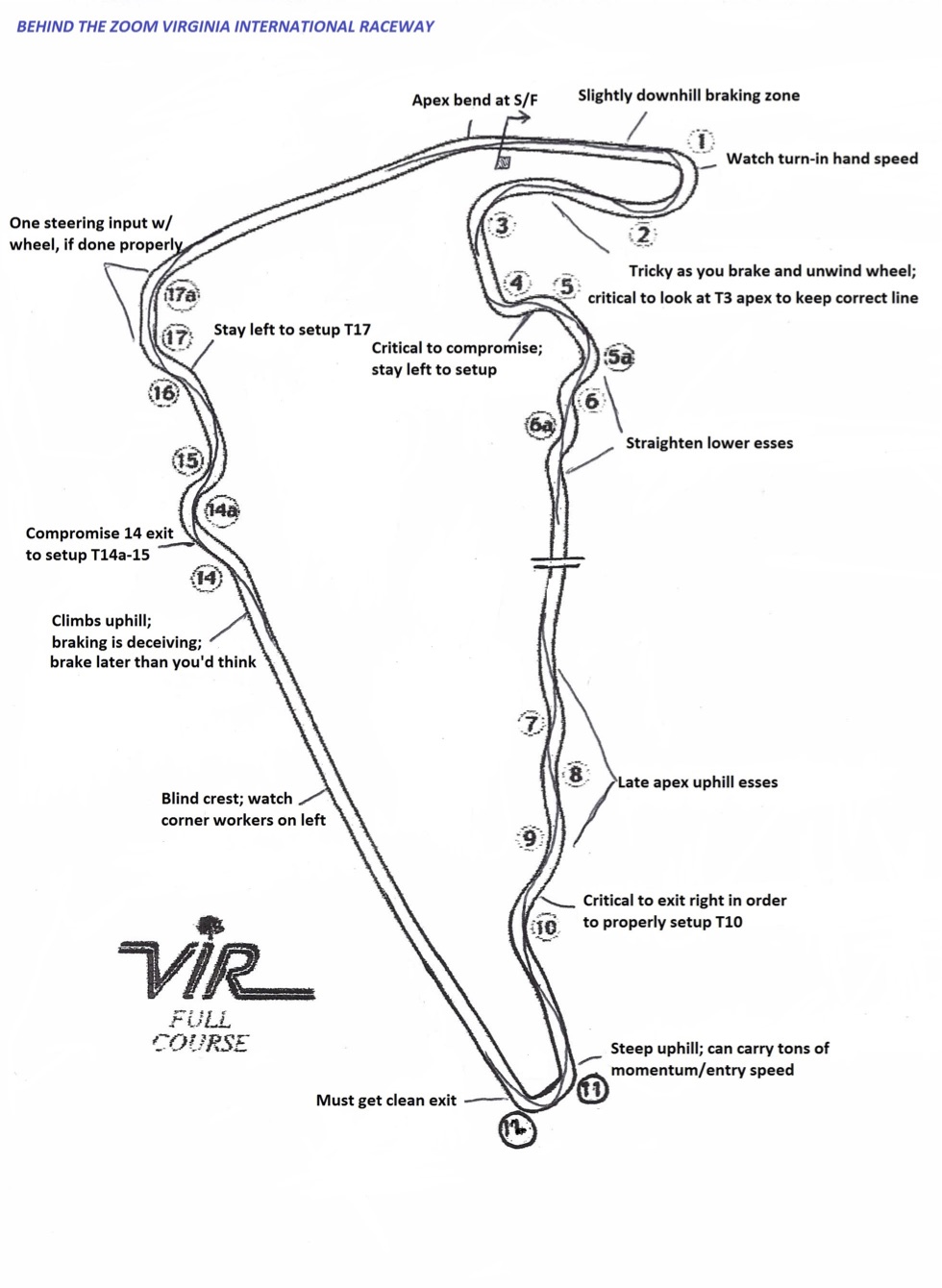Last weekend I coached two drivers at Virginia International Raceway, and neither one had ever driven the track. Both of them are young, up-and-coming drivers: one is 15 and the other is 16. Their goals in motorsports are similar, but their backgrounds and where they are looking to find success in the sport are very different.
Harrison is driving in the NASCAR arena, while Brad has been karting on road courses and is now getting started in sports car racing. Harrison was at VIR because he wanted to learn how to race on a road course, which requires a whole different set of skills than oval racing, with shifting and braking being the two biggest differences between the racing styles. Brad, on the other hand, was learning VIR so that he would be prepared for his first race there later this month.
Harrison and Brad are a similar age, have a similar number of years in racing, and were driving similar cars last weekend. But because they compete in two different types of racing, they had very different skillsets.
How you approach a new track, and what aspects will likely be the biggest challenge for you, depend a lot of on your background as a driver. The type of racing or performance driving that you have done, the cars you have driven, and even the places you have driven all make a difference in what your experience will be like at a new track.
After each session with Harrison, we would review video and analyze car placement on the track. For Harrison, using the whole track and optimizing the line were new skills to learn because that technique is so different from the way stock car racers approach an oval track. As a NASCAR racer, Harrison had never had a chance to use heel-toe downshifting, either, so that was another skill he was able to work on in the braking zones.
For Brad, meanwhile, we utilized a great deal of data that we collected during the sessions, then used it to look at fine-tuning his braking and entry speeds. His experience racing his kart on road courses meant he was already familiar with the driving style, but he had to get used to doing it in a full-sized car.

My VIR “cheat sheet.”
When learning VIR, these are the points I’ve found that really help with reducing lap time. Momentum corners are always going to be important, so you should be thinking about corners where you can keep your speed up, like turn 3, the Uphill Esses, turn 10 and, believe it or not, turns 11, 16 and 17.
Not only are momentum corners important at VIR, but so is car placement in corners that flow into each other: turns 4 and 5, the Uphill Esses, 11 and 12, 14 and 15, and 16 and 17. These are important because one turn leads into the next, and getting the car placement correct in the exit of the first corner is vital to getting a good run into the next corner. Getting all of those combinations right are key to getting a good lap time at VIR!




Trackbacks/Pingbacks